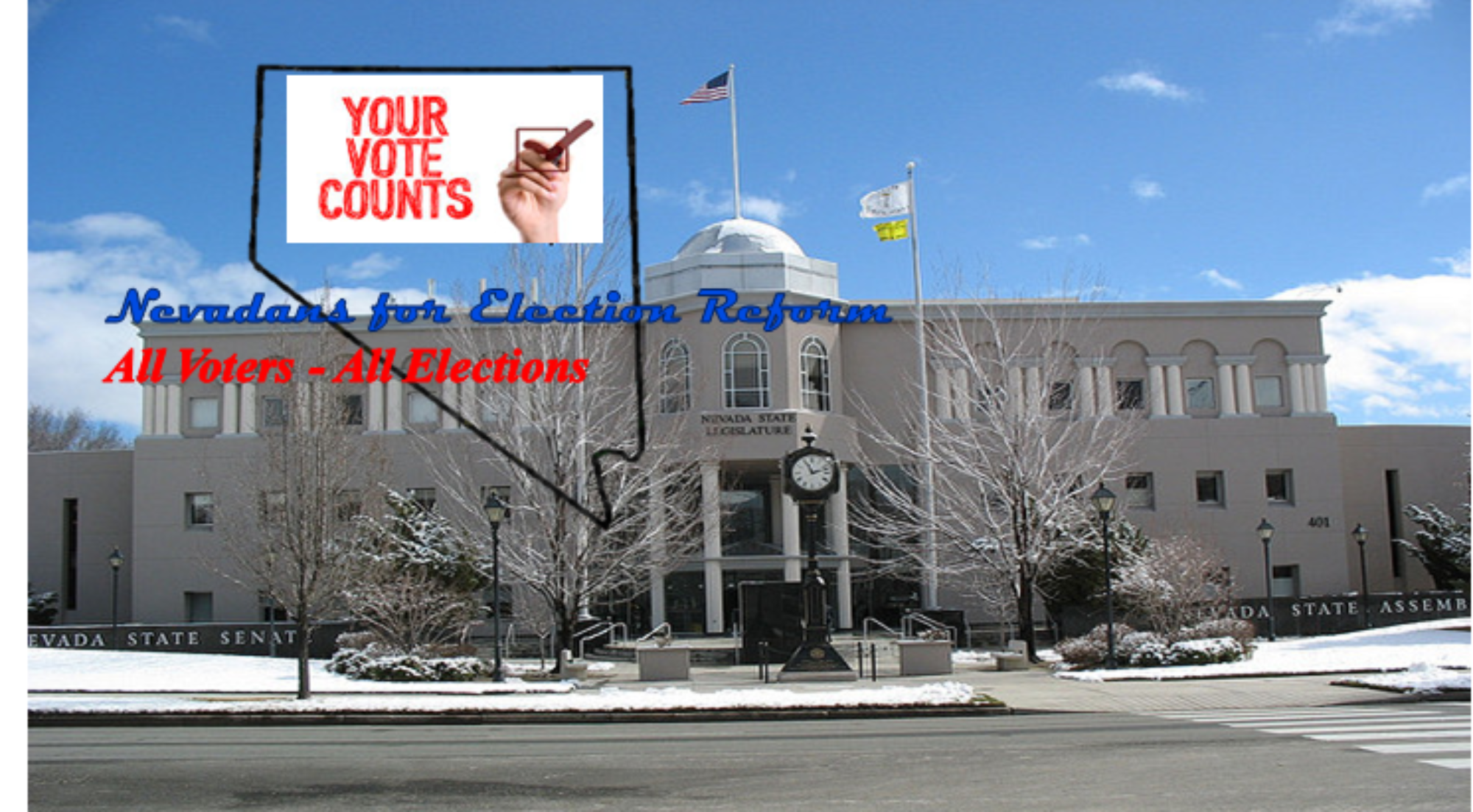The primary election is finished and we’re headed to what should be a heated general election campaign. Given we are choosing a president, a replacement for U.S. Senator Harry Reid, and deciding to require background checks for firearm purchases and legalize marijuana, turnout for the general election should have no problem reaching the presidential year average 75 percent. The turnout for the just completed primary election was 18.51 percent or four times less.
The purpose of the general election is for all voters to have a chance to select who will represent them in the Nevada legislature as well as the U.S. Congress, and local government. Depending on the number of candidates running for a particular office, the winner can be elected with less than a majority of the votes cast. The problem faced this year is that due to a change in state law, only the voters of one of the major political parties had a voice in who represents all voters in three state assembly districts, one state senate district, and 17 county commission wards. As many as 61 percent of voters had no say. Based on turnout, an average of 15 percent of the voters made the decision and the winner received an average of just under nine percent support. Even support within the party averaged less than 17 percent. Far from a mandate.
|
District
|
Party
|
% Party
|
% Not Eligible
|
Party % T/O
|
% T/O Total Reg Voters
|
% Party Rcvd by Winner
|
% Total Reg Voters Rcvd by Winner
|
|
SD 4
|
D
|
60.69
|
39.31
|
17.94
|
10.89
|
12.60
|
7.64
|
|
AD 13
|
R
|
41.06
|
58.94
|
19.61
|
8.05
|
12.19
|
5.01
|
|
AD 19
|
R
|
38.89
|
61.11
|
26.35
|
10.25
|
16.12
|
6.27
|
|
AD 26
|
R
|
45.73
|
54.27
|
30.66
|
14.02
|
16.97
|
7.76
|
|
Washoe Cty 4
|
R
|
42.72
|
57.28
|
26.78
|
11.44
|
14.72
|
6.29
|
|
Churchill Cty 3
|
R
|
59.33
|
40.67
|
30.19
|
18.42
|
16.66
|
9.88
|
|
Douglas Cty 1
|
R
|
53.42
|
46.58
|
43.30
|
24.73
|
24.29
|
13.87
|
|
Douglas Cty 3
|
R
|
53.42
|
46.58
|
43.24
|
24.69
|
25.26
|
14.42
|
|
Elko Cty 3
|
R
|
56.74
|
43.26
|
23.62
|
13.40
|
9.62
|
5.46
|
|
Esmeralda Cty 2
|
R
|
57.59
|
42.41
|
8.38
|
4.83
|
4.49
|
2.59
|
|
Humbolt Cty A
|
R
|
55.04
|
44.96
|
33.65
|
18.52
|
21.51
|
11.84
|
|
Humbolt Cty B
|
R
|
55.04
|
44.96
|
33.72
|
18.56
|
21.99
|
12.10
|
|
Lander Cty 3
|
R
|
59.45
|
40.55
|
40.68
|
24.18
|
21.46
|
12.76
|
|
Lincoln Cty A
|
R
|
56.86
|
43.14
|
32.85
|
18.68
|
21.62
|
12.29
|
|
Lincoln Cty E
|
R
|
56.86
|
43.14
|
32.64
|
18.56
|
17.22
|
9.79
|
|
Lyon Cty 1
|
R
|
49.16
|
50.84
|
25.17
|
12.38
|
13.69
|
6.73
|
|
Lyon Cty 3
|
R
|
49.16
|
50.84
|
25.45
|
12.51
|
11.98
|
5.89
|
|
Nye Cty 1
|
R
|
46.61
|
53.39
|
4.77
|
2.22
|
2.71
|
1.26
|
|
Nye Cty 3
|
R
|
46.61
|
53.39
|
6.31
|
2.94
|
2.17
|
1.01
|
|
Pershing Cty A
|
R
|
50.21
|
49.79
|
43.12
|
21.67
|
31.33
|
15.74
|
|
Pershing Cty B
|
R
|
50.21
|
49.79
|
43.32
|
21.75
|
28.42
|
14.27
|
Based on these results, instead of making it easier on the parties and their candidates, it will be extremely difficult for the winners to claim they represent their constituents in the state legislature or county commission.
The solution is simple. At the very least, the change to state law enacted in 2015 should be repealed with races where only one party has candidates reverting back to being voted on by the entire electorate in the general election. An even better solution would be for the 2017 session of the Nevada legislature to enact the Nevada Election Modernization and Reform Act of 2017 (NEMRA – 2017). Allowing all races to be decided with maximum general election turnout would ensure results such as those above never happen again.
